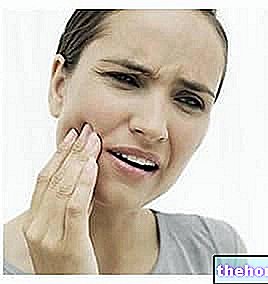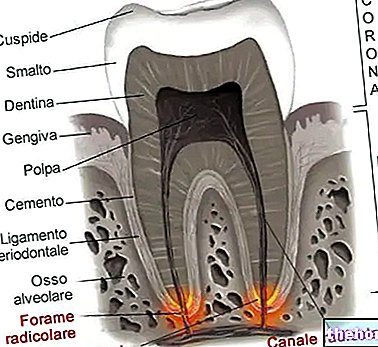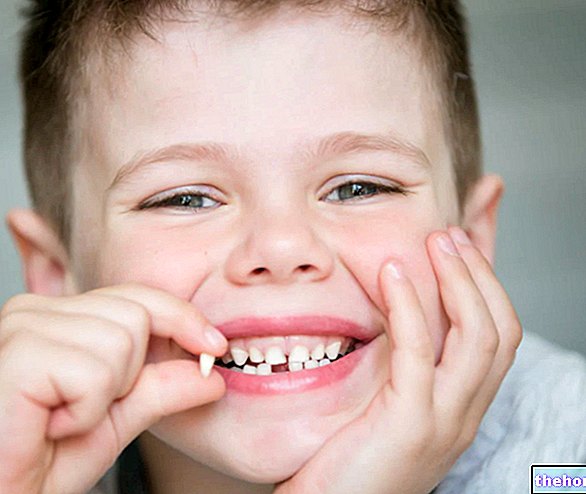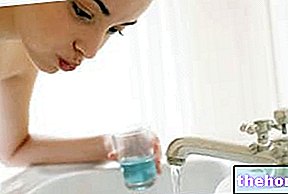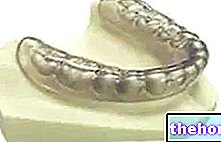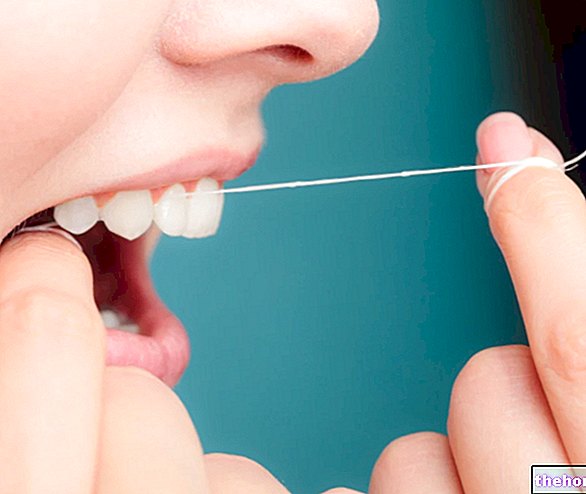Who knows if the Mona Lisa would have achieved such artistic success if, in place of her imperceptible and enigmatic smile, she had been portrayed with crooked teeth...

Aesthetic discomfort
Crooked teeth are a not indifferent aesthetic discomfort that torments many people, so much so that it also negatively affects interpersonal relationships. In addition to spoiling the smile and precipitating self-esteem, crooked teeth can also interfere with correct chewing and transform the appointment with daily oral hygiene into an extremely difficult and problematic undertaking.
You know, a smile that shows off (so to speak) crooked teeth is far from the ideal of harmony and balance (a reality that can only be enjoyed by a few, a few, lucky ones). As often happens, Mother Nature is not always so generous. : straight, regular, perfectly aligned and - why not - even white teeth are aesthetic standards as coveted as they are appreciated by everyone. Conversely, crooked, yellow, chipped or broken teeth - which upset the aesthetics of the smile - inevitably attract the gaze of others as soon as he opens his mouth, arousing an "idea of disgust and poor oral hygiene.
The good news? Fortunately, crooked and disharmonious teeth can be aligned with some specific orthodontic interventions, more or less invasive: among these, the choice of the most suitable treatment depends on the severity of the condition and the age of the patient.
Causes
The origin of crooked teeth can be linked to genetic factors or, as often happens, to incorrect behavioral attitudes (especially during childhood). Let's see what are the most frequent causes of crooked teeth:
- Crowding and bad positioning of the teeth
- Dental malocclusion linked to genetic factors
- Early loss of baby's milk teeth
- Loss of teeth in adults
- Poor dental fillings
- Imperfect dental encapsulation
- Jaw size too small
- Chronic gingivitis / pyorrhea
- Bruxism
- Tumors of the mouth and jaw
- Incorrect childhood attitudes: habit of sucking thumb or pacifier, habit of bottle-drinking after 3 years, push tongue against teeth
Aftermath
Crooked teeth do not only negatively affect self-esteem and smile aesthetics. In fact, keeping the health of the teeth under control is necessary (as well as essential) to avoid chewing problems, dental disorders and so on.
What are the most common effects of crooked teeth?
- Chewing problems → negative effect also on food digestion
- Difficulty cleaning the teeth thoroughly → accumulation of plaque and tartar → increased risk of caries, gingivitis, pyorrhea, tooth loss
- Brittle teeth → increased risk of breakage
- Alterations of the harmony of the face
- Language difficulties (rare)
- Difficulty closing the lips correctly → the subject tends to breathe through the mouth
- Facial pains, postural defects, tinnitus (ringing in the ears) and headaches (symptoms generated by severe dental malocclusion)
Diagnosis and therapies
There is nothing easier and more immediate than diagnosing crooked teeth: just smile.
Clearly, it is then up to the dentist to establish the extent of the dental damage and the severity of the misalignment, and therefore act accordingly.
Braces are the most effective (and most used) remedy for aligning crooked teeth in children and young people. Today, with the improvement of orthodontic techniques, it is possible to "wear" a latest generation appliance that fits perfectly on crooked teeth, clearly improving their alignment over a few months / years.
Modern braces seem to be the ideal panacea for crooked teeth. But that is not all. If until a few years ago these devices were considered real infernal tools for torture, guilty of making even more ugly a smile already ruined by crooked teeth, today they seem to have become very trendy even in the world of adults. This is because we tried to combine the therapeutic effect of the appliances (which is extremely effective against crooked teeth) with a shape that is as pleasant as possible.
To remedy crooked teeth, there are numerous models of orthodontic appliances, divided into two macro categories:
- Fixed braces: made up of small metal attachments glued to each tooth, linked to each other by means of a metal arch that slides into all the plates, perfectly following the dental arch. The "pulling" action of the device allows you to align crooked teeth after one or two years To make them less visible, the modern anti-crooked devices are made up of clear-transparent plates, much less conspicuous than the previous ones.
Other modern braces for crooked teeth have been designed to be completely hidden: in fact, the metal plates are cemented on the inner face of the tooth. - Mobile appliances: these are transparent Plexiglas appliances to be applied on the dental arches. To take full advantage of the therapeutic efficacy, therefore to align crooked teeth within the shortest possible time, the mobile braces should be worn for 20 hours a day (they must be removed only during meals).
Whether it is fixed or mobile, it matters little: the dental appliance is always designed to align crooked teeth, improve chewing and promote adequate dental hygiene.
In some cases, for example if the dental crowding depends on a narrow palate, the extraction of some teeth (generally, 2 molars of the lower arch and as many of the upper one) can be an effective alternative to straighten crooked teeth. .
Only in extreme cases (particularly severe dental malocclusion), the patient will have to undergo invasive surgical treatments aimed at reshaping, lengthening or shortening the jaw. Surgery is clearly the last resort, indicated to align crooked teeth responsible for serious damage to the patient's health.

